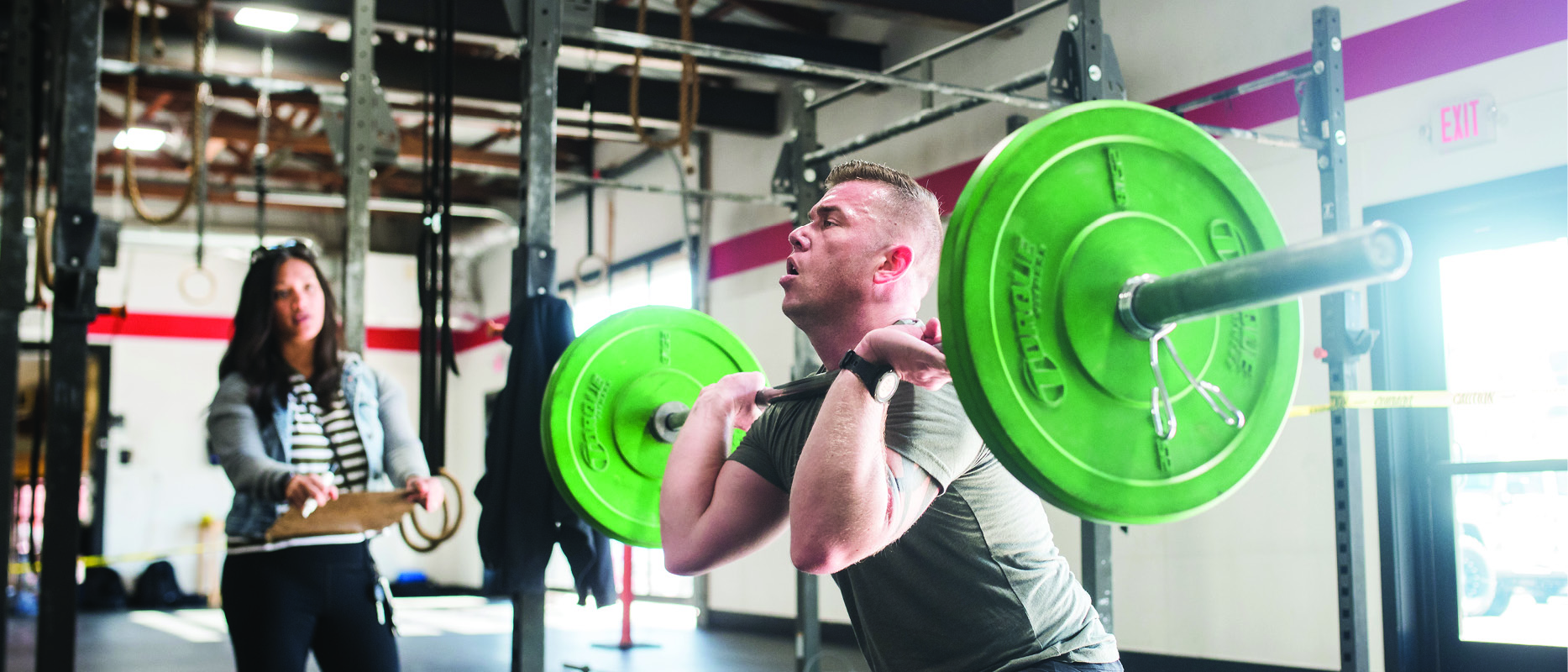When to Rx the WOD
Written by Sam Hovda
Should I Rx this workout? This is a question that every coach has either heard or picked up on through an athlete’s body language. While this may sound like an easy question to answer, it’s far more complex than a simple yes or no. Before answering the “should I Rx” question, it’s important to understand what Rx actually means.

Let’s start with weight choice. A well thought-out program is not simply spirit-breaking, vomit-inducing and 3-2-1-GO sprint workouts. A well thought-out program is strategically laid out so that the athletes may benefit from a variation in intensity, strength and active recovery. So how does that all relate to the prescribed weight? Let’s pick a movement – we’ll say power cleans. This is a movement that you are likely to see a few times within the same month in various workouts. On one day, the workout may call for power cleans at 95lbs/65lbs and the next time at 155lbs./105lbs. Should you Rx both, or should you only Rx the first and scale the weight for the second? Let’s dive into it.
Everyone is different, and the workout should hit the intended stimulus relative to your fitness level and abilities.
The prescribed weight in a workout is only a small part of the big picture. Your gym’s programmer has not only designed some unique and exciting workouts for you, but they have constructed each workout with a different intended stimulus. Sometimes they want to tax the central nervous system with relatively heavy weight and few reps while other times the workout is meant to be a cardio training tool by using lighter weights at higher volume.

How do we read between the lines and figure out the intended stimulus? First, look at the workout, considering all of the surrounding movements, the number of reps and the all-important time cap. Should this be a three minute workout or a 30 minute workout? Now ask yourself if you can make it through the workout at the prescribed weights while also upholding the standards of the movements.
Hold up…Standards? Maybe you tell yourself “This isn’t a competition. I’m not looking to podium here, so what if I don’t squat below parallel or my head doesn’t touch the mat. I just want to get in a good workout.” If you find yourself using this thought process then ask yourself this: if it’s not a competition, why does it matter if you click that Rx button in Wodify when entering your score? We can always create a challenging version of the workout through scaling and modifying movements. Everyone is different, and the workout should hit the intended stimulus relative to your fitness level and abilities. Check your ego at the door and realize your limitations. If you do this and start to continuously hold yourself accountable to the intent of the workout and the standards that are prescribed, you will become a much stronger and healthier athlete.
If you continuously hold yourself accountable to the intent of the workout and the standards that are prescribed, you will become a much stronger and healthier athlete.
Health is the big goal for all of us. If you keep trying to put yourself in compromising situations or progressively scaling just to keep up so as not to be the last one to finish, you are asking for injury. Many standards were developed to help you maintain form and range of motion. Those two things will help contribute to you getting healthier and stronger much faster than cheating yourself on rep standards just to finish sooner.

The last thing that should be addressed is the common phrase “It’s not my strength, it’s my mobility.” The simplest way to address this issue is to understand that the prescribed weight and movement are written for the athlete that not only has the strength but also the mobility to correctly move through the range of motion without compromising their health. So rather than trying to Rx the weight when you are unable to complete the full range of motion of the movement, keep it relative to you by finding a weight or scaling option that allows you to train your maximum range of motion safely and effectively so you can get closer to that Rx standard one day at a time.
So was your question answered? Hopefully, yes! But, if not, you should at least know what questions to ask yourself and your coach in order to figure out how to best approach any given workout. If the intent is not clear to you, don’t hesitate to ask! If you know your thoracic mobility is lacking, tell the coach. Your coach is there for you, so use them. Also, if your mobility could use some work (and most of ours could), or your technique is sub par, look into your gym’s other resources. Maybe it’s time to consider a yoga class, ask about personal training options, or maybe you just need to actually show up to that dreaded active recovery day.

